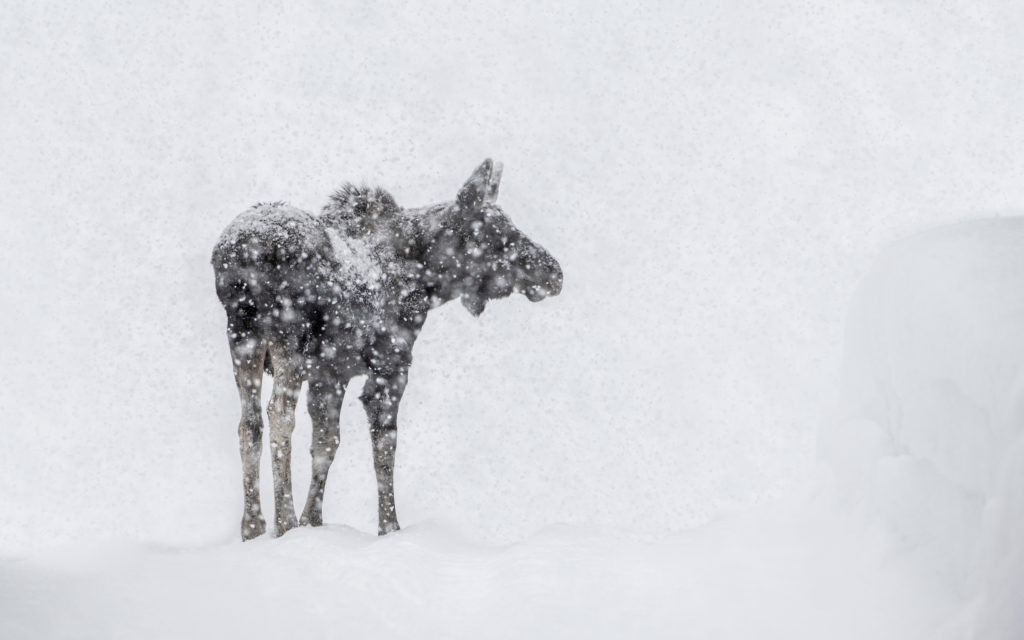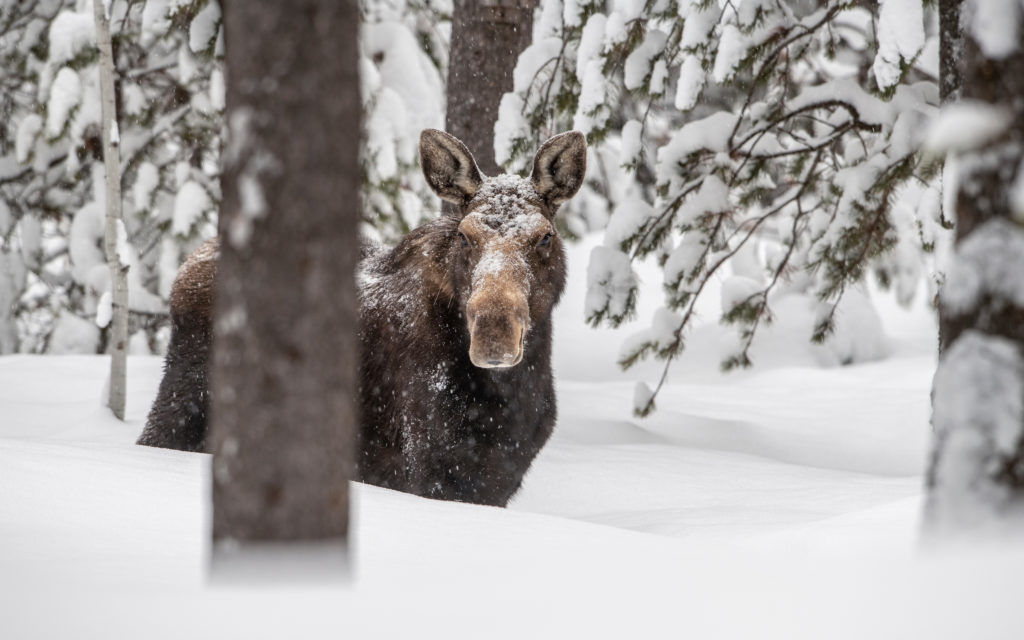
By Jim McGeever
As of this writing, winter has a firm grasp on the Henry’s Fork Wildlife Alliance footprint. Significant and much-needed snowstorms have left our snowpack and snow water equivalent slightly above 100%. In addition to the snow, record-breaking low temperatures have moved through the Henry’s Fork region. With the snow and frigid temperatures come the expected obstacles faced by the human inhabitants of the area: closed highways and schools, frozen pipes and roofs that need shoveling.
But how do the non-human residents, particularly our resident ungulates, cope with the challenging weather we’ve recently experienced? Moose, elk, deer, and pronghorn possess several physiological and behavioral characteristics that are crucial to their survival in the harsh environs the area has recently experienced.
Ungulates prepare for the winter months well ahead by trading their summer coats for thicker, longer, and darker ones. A dense underlayer of fur, covered over by longer guard hairs, helps trap air against the body providing insulation. And it’s effective. You may have seen moose or bison resting along the rivers with snow accumulating on their backs: a testament to an insulation factor effective enough to keep snow from melting.
The ungulates that live in the Henry’s Fork region are also ruminants. Ruminants possess a multi-chambered stomach which houses a significant number of micro-organisms, allowing them to digest rougher food options available in the colder months of winter, such as the green branches of shrubs and trees that have remained above the snowline. Additionally, one of the main by-products of digestion is heat. As an ungulate’s unique digestive system works to convert winter forage into digestible foods, it doubles as an internal heat source at a much-needed time.
Another characteristic found amongst the ungulates is their long legs. These legs assist them when traveling in deep snow. Those long legs can also serve as digging tools to reach foods buried under the snow. Blood traveling in arteries leaving the main body wrap around the veins returning to the body. This warms the blood on the return trip up the leg and minimizes heat loss as long as they aren’t forced to travel through snow depths higher than their legs.
Ungulates adapt their behavior to reduce heat loss and conserve energy during winter. They are generally less active, sometimes dropping their metabolism by half. This allows them to save energy and eat less. In particularly harsh weather, they may find a sheltered area and not move for prolonged periods – even to eat. This is made possible by relying on existing fat stores and their winter coats. Patches of snow-loaded conifer trees or dense river bottoms provide cover from strong winds and will often have lower snow depths than the surrounding area. These animals will regularly shelter in this type of habitat to mitigate their exposure to winter conditions.
With all this said, wintertime is a period of heightened vulnerability. Severe winter conditions claim lives every year from our herds. Additional threats come naturally from predators in the wild as well as in the form of well-meaning humans. If you are fortunate enough to see moose, elk or deer bedded down in the winter, give them plenty of room and try not to disturb them to the point where they feel threatened enough to move to another location. For these animals, the physical excursion of fleeing a threat through deep snow and cold while on a limited caloric intake can be very costly. This is why many surrounding states prohibit shed hunting during winter seasons, to prevent humans from seeking out and disturbing herds during this sensitive period.
For some, it’s easy to fall into the misconception that the moose, elk and other animals we enjoy seeing in the winter will benefit by supplemental food provided from us. However, artificially feeding ungulates easily digestible carbohydrates (such as corn) can cause numerous digestive issues, including Rumin Acidosis. And while this condition is not always fatal, the adverse side effects experienced could not come at a worse time for these animals. Therefore, the best way we can help our ungulate species during winter is to avoid disturbing them on wintering grounds and trust in their robust set of physical and behavioral tools to withstand the snowpack and cold that winter has recently delivered.

